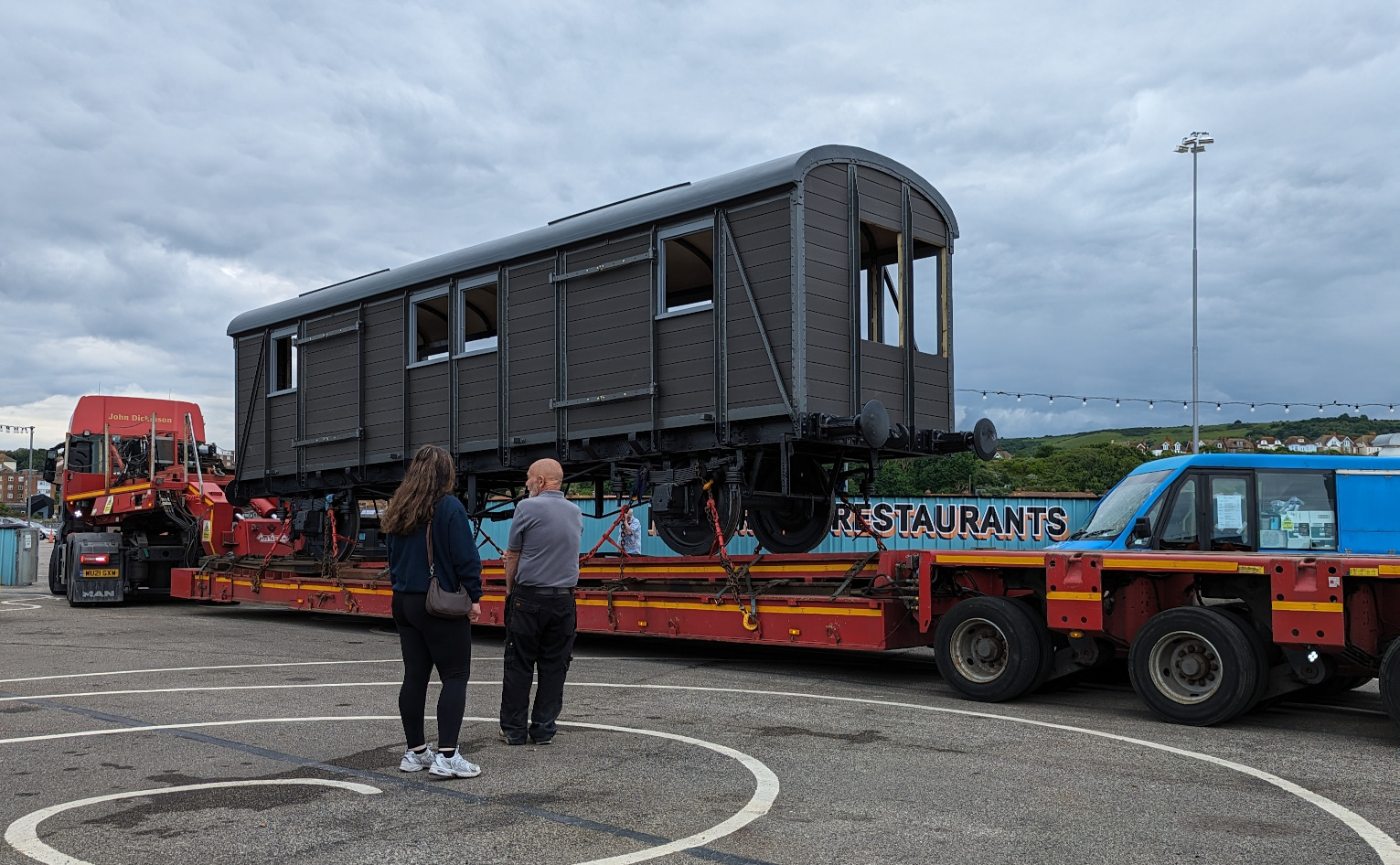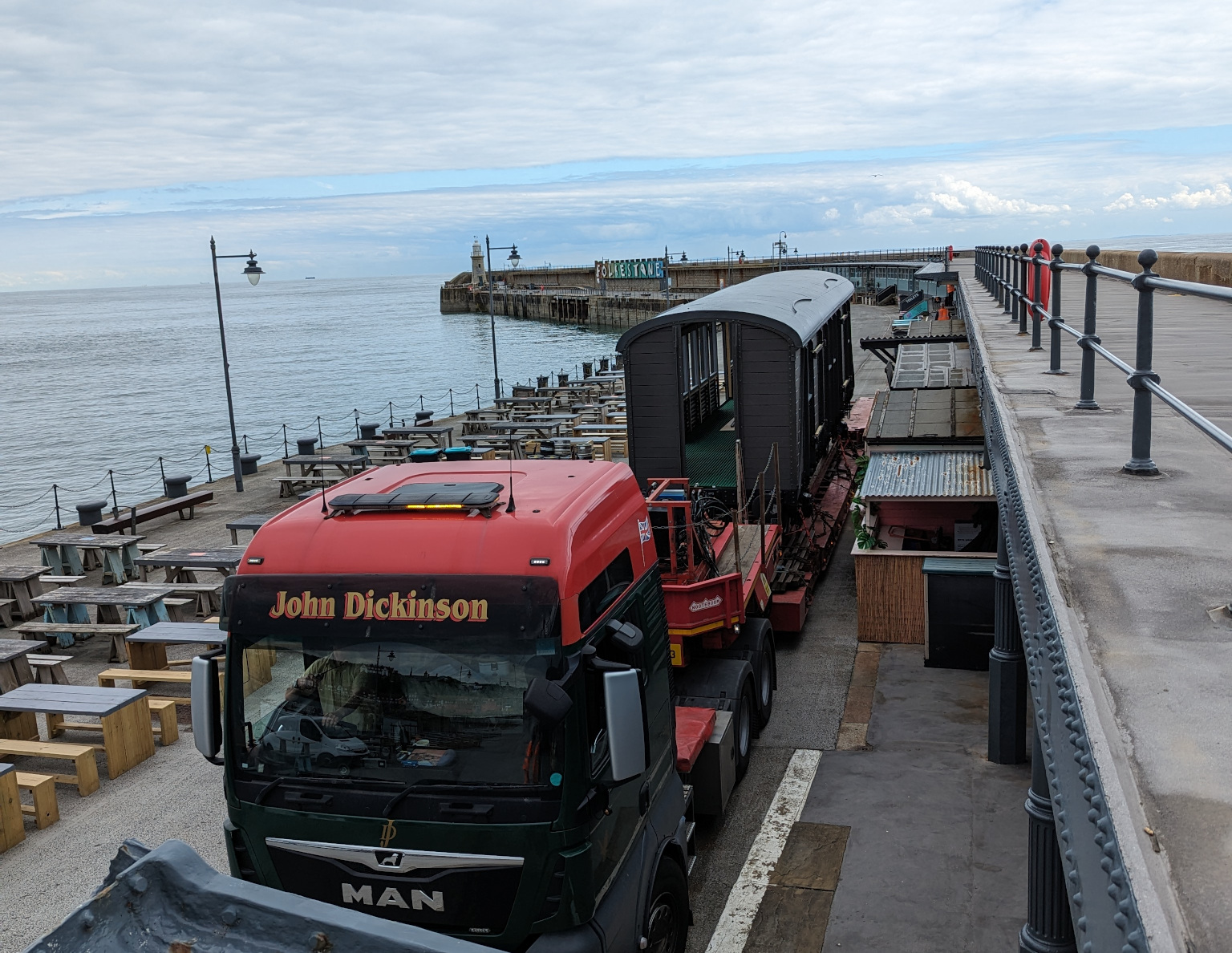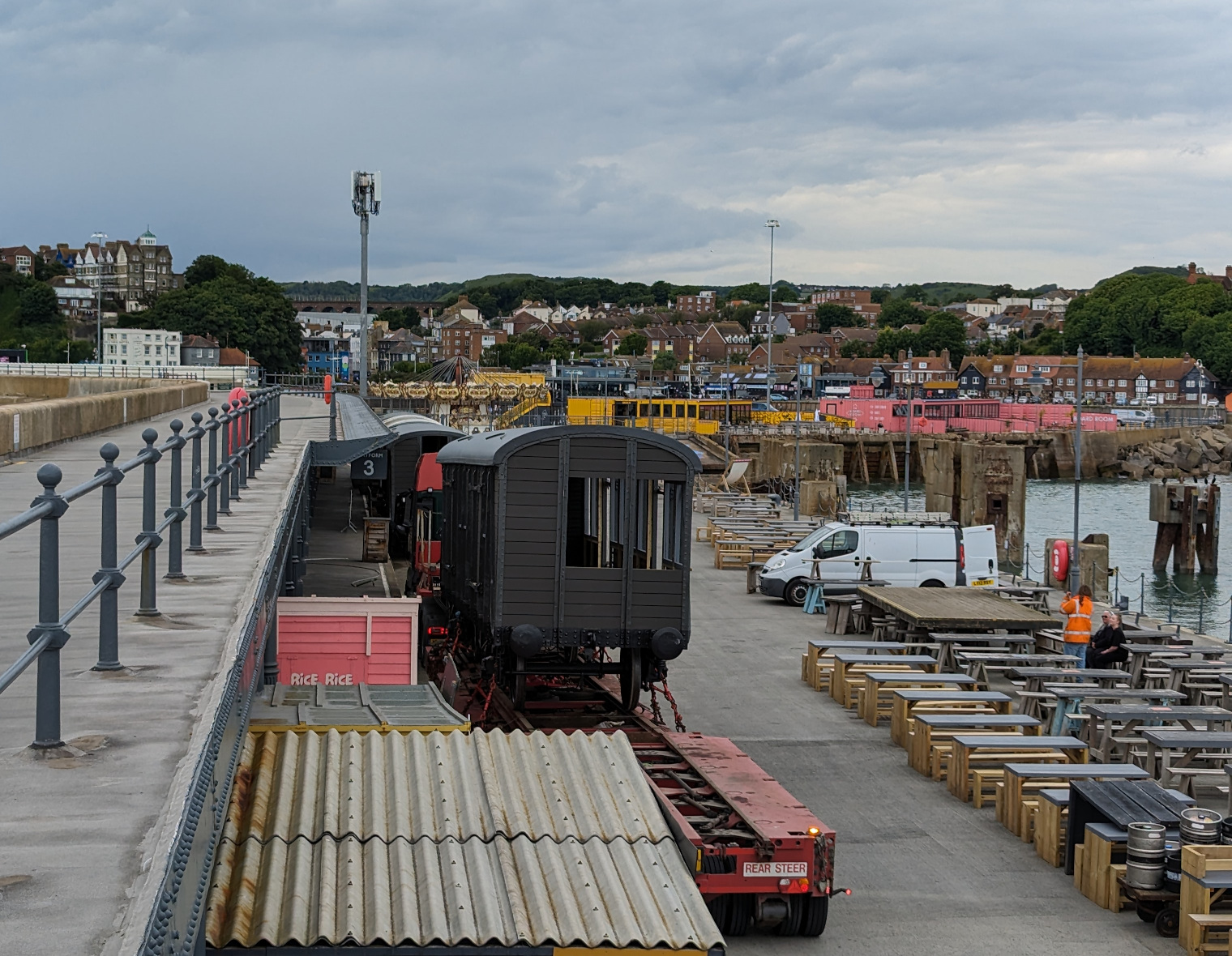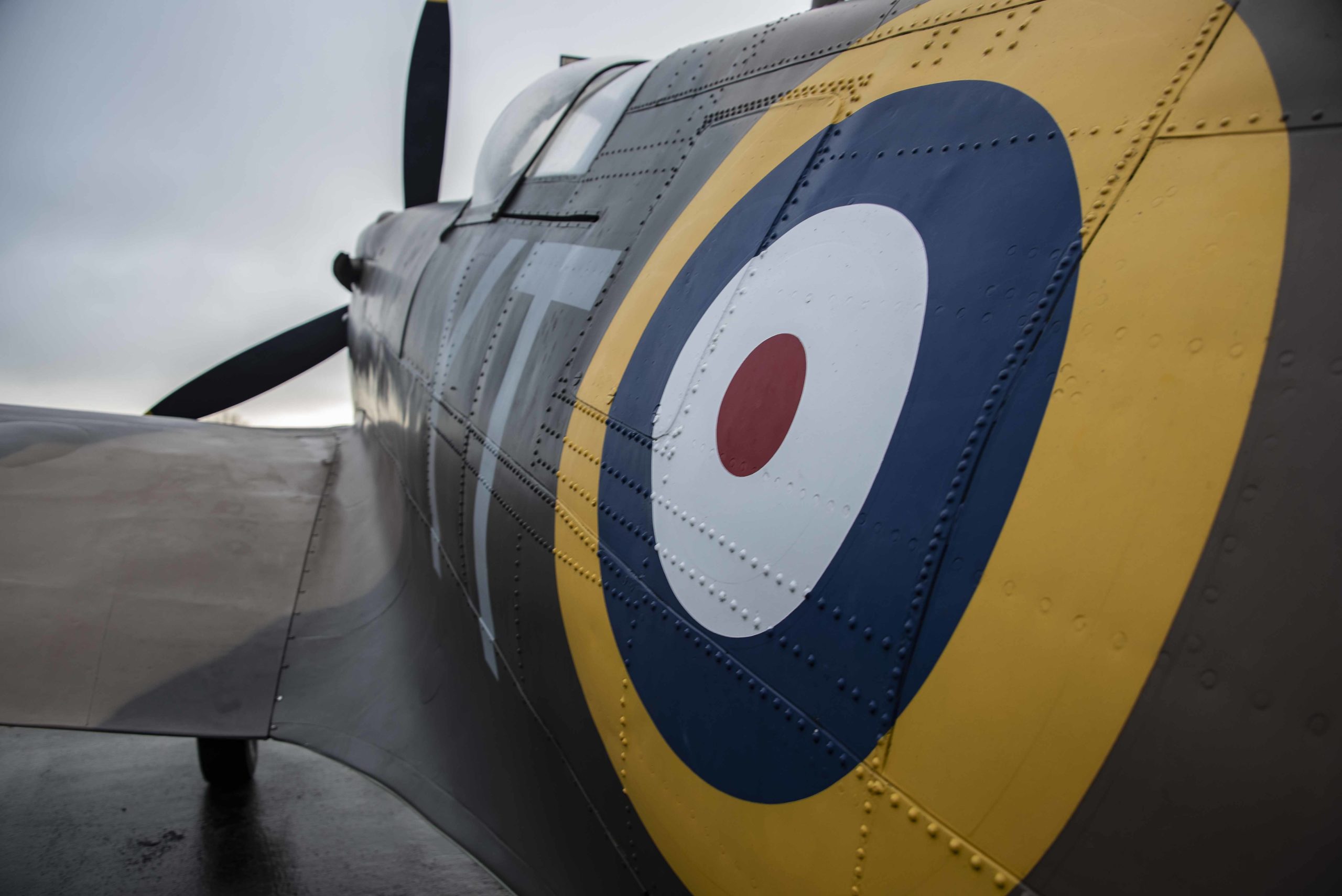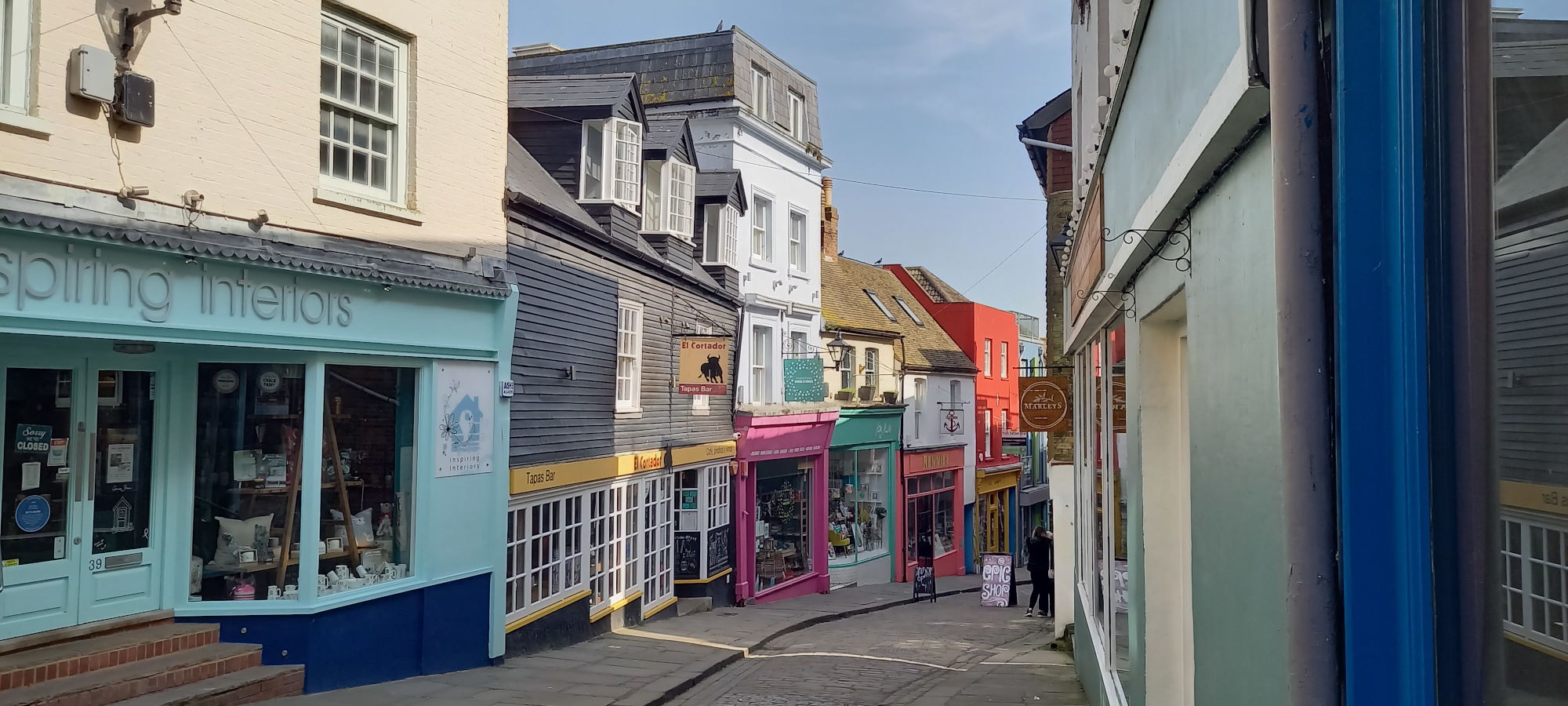Live
a caravan of Cavell Carriages arrive at Folkestone Harbour
Folkestone Harbour has received a collection of train carriages that have a respectable history. Two of the new additions are known as PMVs – Parcels and Miscellaneous Vans built from 1919 onwards. You might notice these next door to Shesells Seashells at Platform 3. As their name suggests, they were designed to carry post and other such items yet the prototype van, Number 132 had a different cargo. Edith Cavell was the van’s first passenger in 1919 as the first civilian to be executed by the Germans in World War 1. Her crime was “helping the hostile Power or of causing harm to the German troops”.
Edith was a nurse during the war, and she helped Allied soldiers to escape occupied Europe. On 12th October 1915 she was executed by firing squad. The outrage this caused around the world really surprised the German government. Edith became a propaganda tool to highlight the barbaric nature of the German Army. She also did something else, something far more mundane. Her name became synonymous with passenger luggage vans in Kent and East Sussex. For over half a century, these luggage vans were called ‘Cavells’ by those who worked on the trains.
Elephant van
Folkestone Harbour feels strongly about marking the heritage of the site. Adding these vans to the collection on Platform Three helps revive the essence of the working harbour throughout the last couple of centuries.
There is a third van which will join the Harbour later in the summer is known as an Elephant Van. When built in the early 1900s there were a number of travelling circuses. They needed vans which were capable of carrying both sets, furniture and also the circus’s animals. This van did indeed transport elephants, and later on, after the circuses faded and found other methods of transport, their fate was to carry parcels.
All three vans have been restored by the East Kent Railway Trust.

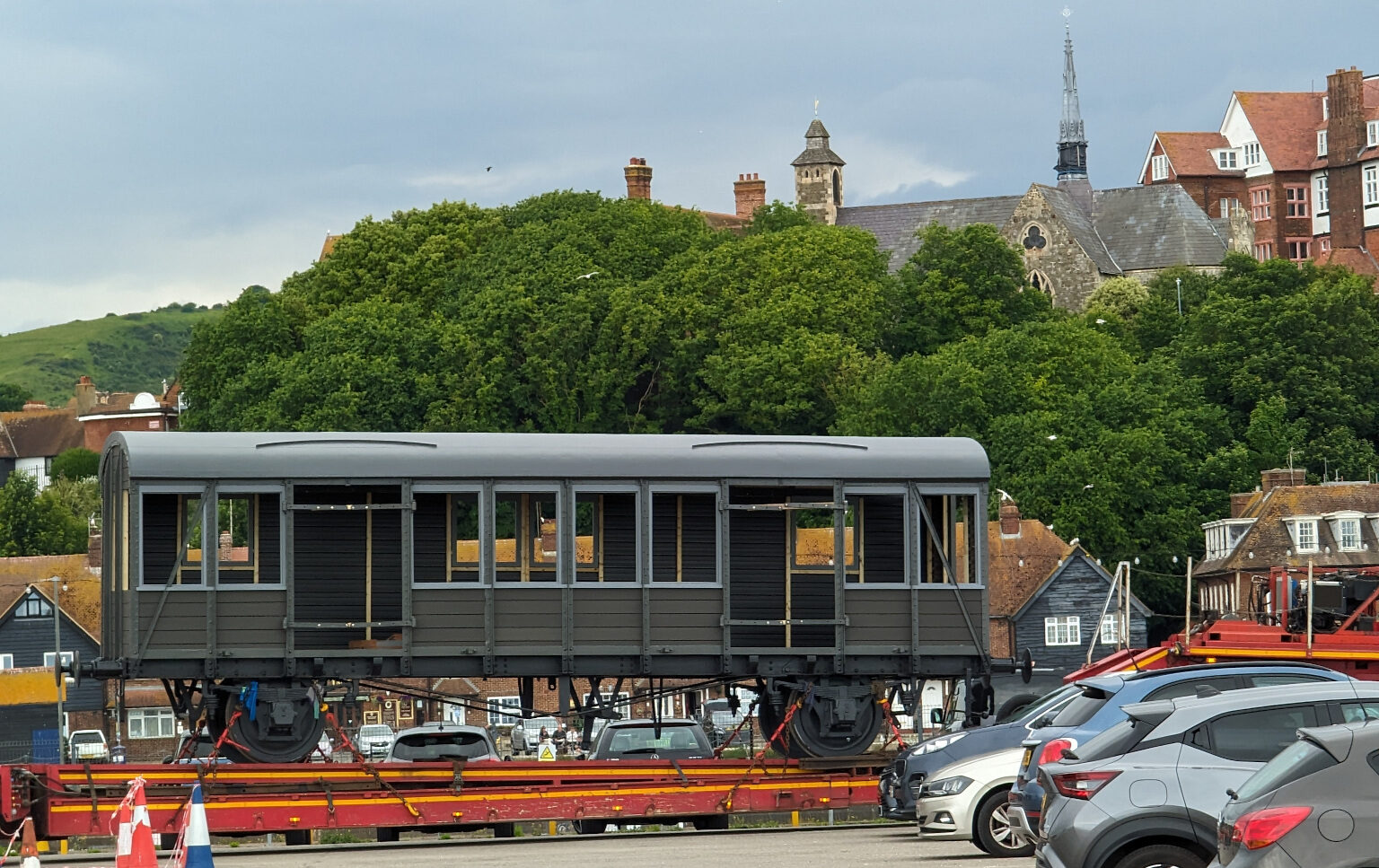

the first cavell
The prototype Cavell Carriage, van 132, has another link to Folkestone. It transported the body of the Unknown Warrior in 1920. The idea of the Unknown Warrior came from a man called the Reverend David Railton who was curate at St Mary’s and St Eanswythe Church.
He went to war in 1916. His job was to recover bodies and tend to wounded soldiers from the battle field. He wrote to Prime Minster David Lloyd George to suggest that one of these bodies be brought home. It should be buried in a public place so that all of Britain could claim him as their son who fought for our freedom.
The Origins of the Unknown Warrior
This would turn out to be the first Tomb of the Unknown Warrior in the world. Once Rev. Railton had persuaded the Prime Minister, plans were put in place to recover one of the bodies and bring him home. In 1920, Van 132 or the Edith Cavell Van, carried the body of the Unknown Warrior from Dover to London. At the ceremony on 11th November 1920, many witnessed the casket journey from the Cenotaph to be interred at Westminster Abbey.
revisiting folkestone
Van 132 visited Folkestone Harbour in 2018 to mark the centenary of the ceasing of fire in WW1, and you can read more about its visit here. Brian Janes, Curator and Custodian of the Edith Cavell Van, from the Kent and East Sussex Railway has researched this van. He’s restored it with the support of Heritage Lottery Funds. He talks about how the van would have been lined with purple drapes, and the coffin and filled with wreaths and flowers. The van is now a museum and is usually at Bodiam Castle, East Sussex, but it goes on tours on special occasions.
folkestone Harbour vans
Once the vans are in situ they will be fitted out for their next role in Folkestone Harbour. More news about that to follow, but for now, do enjoy the collection of these historic vans on Platform 3.
